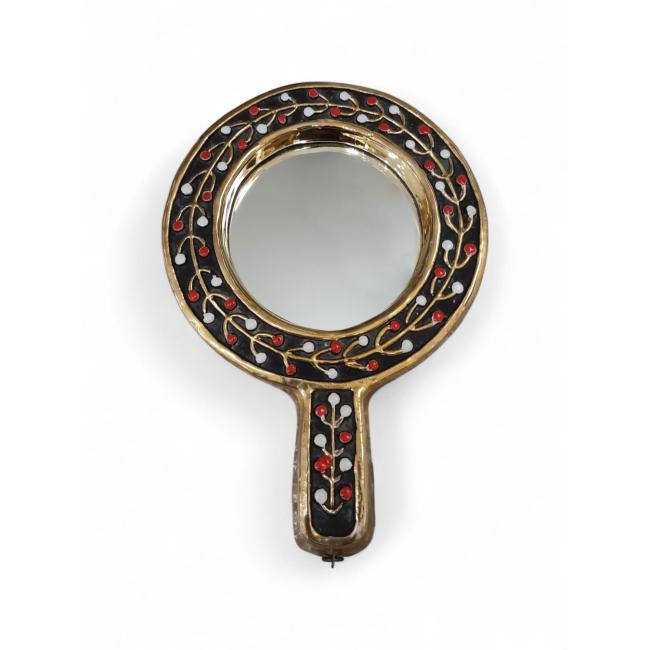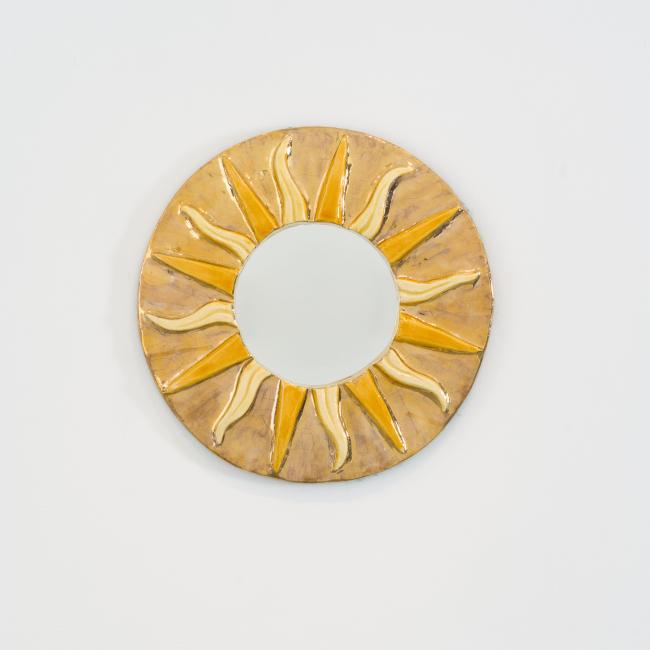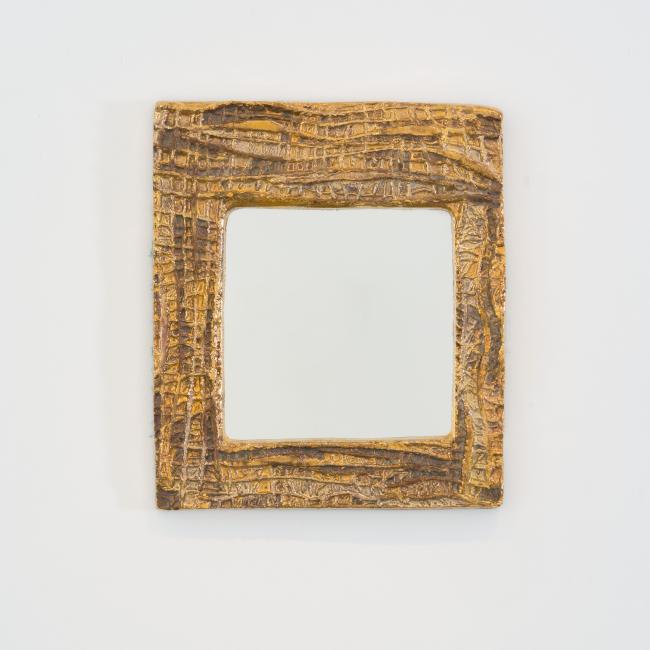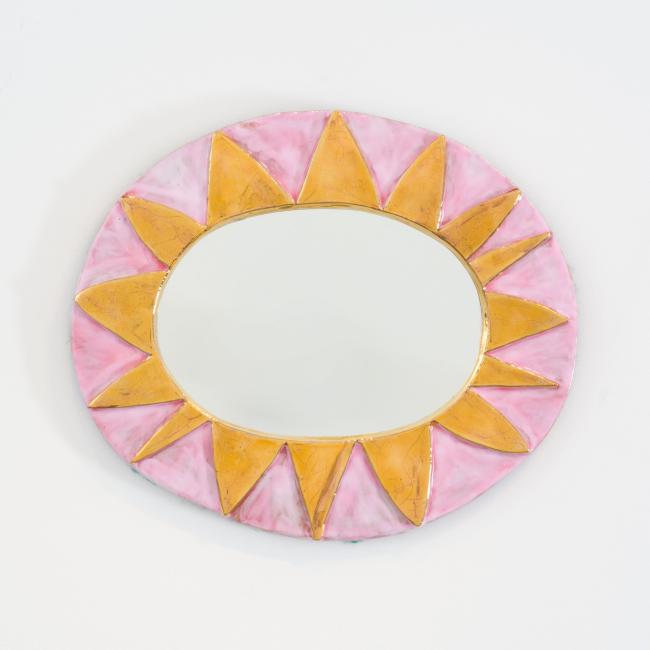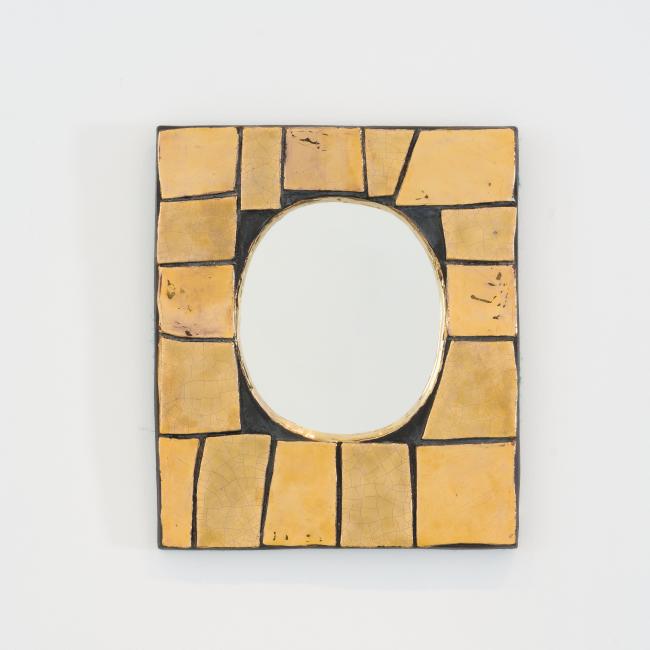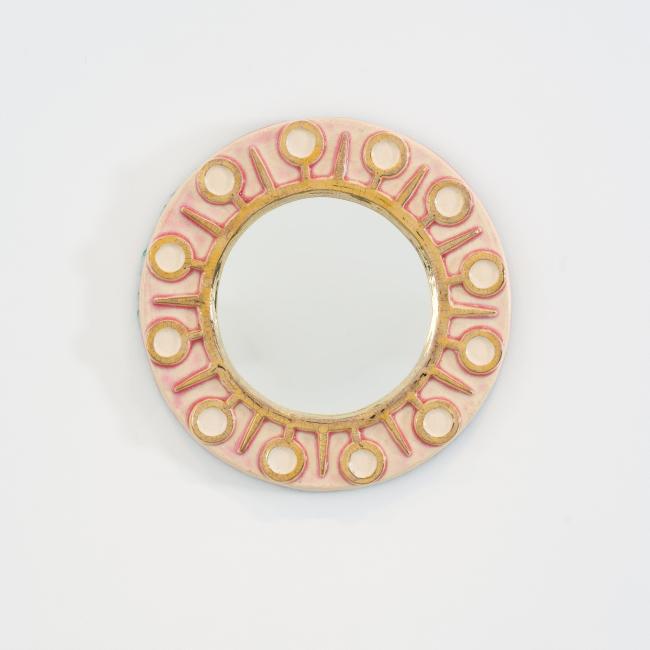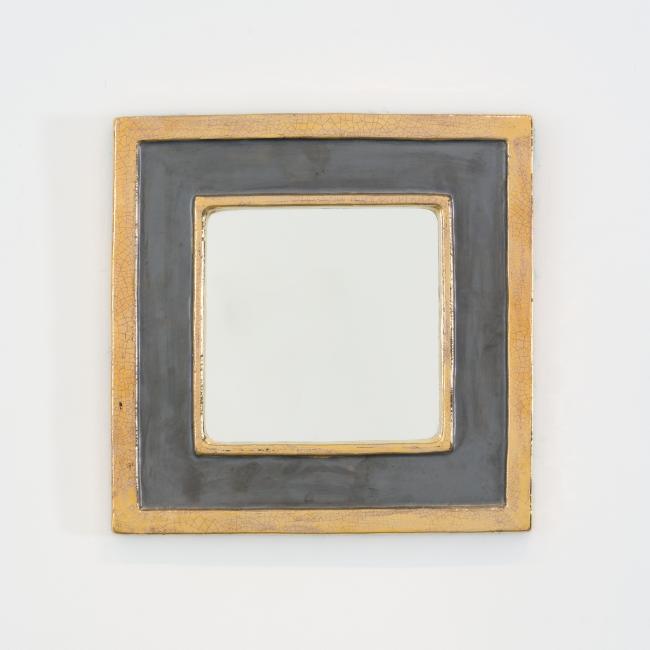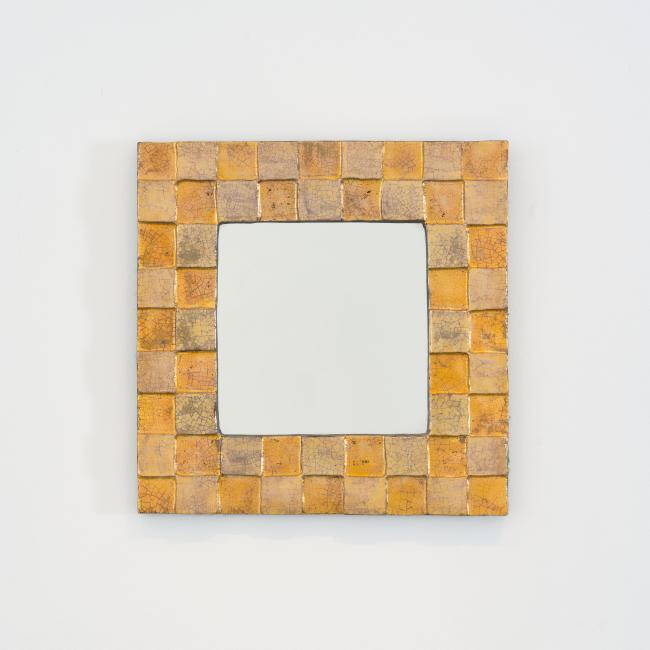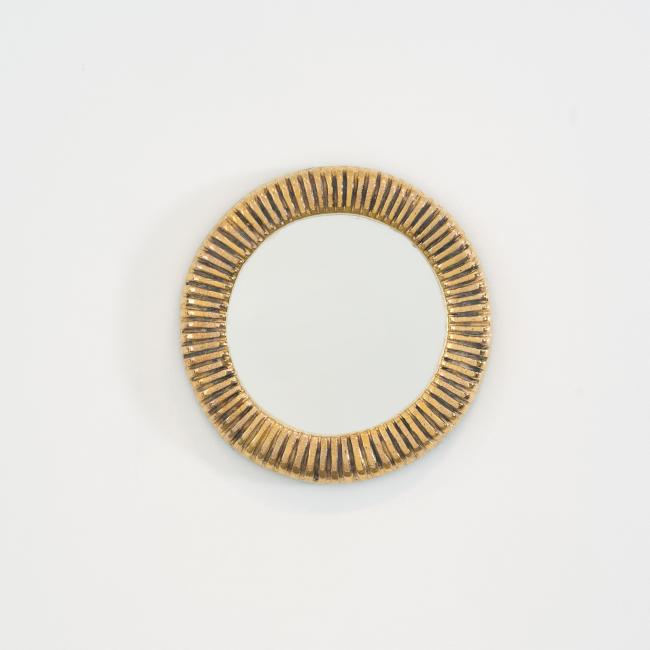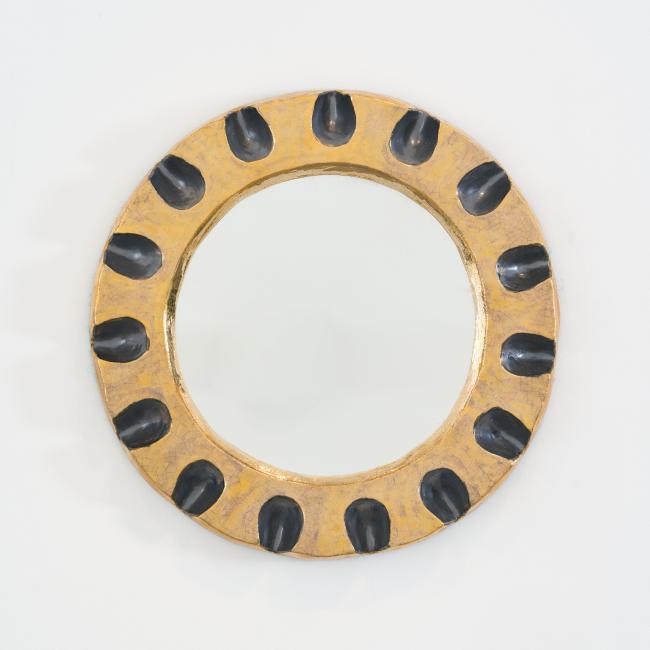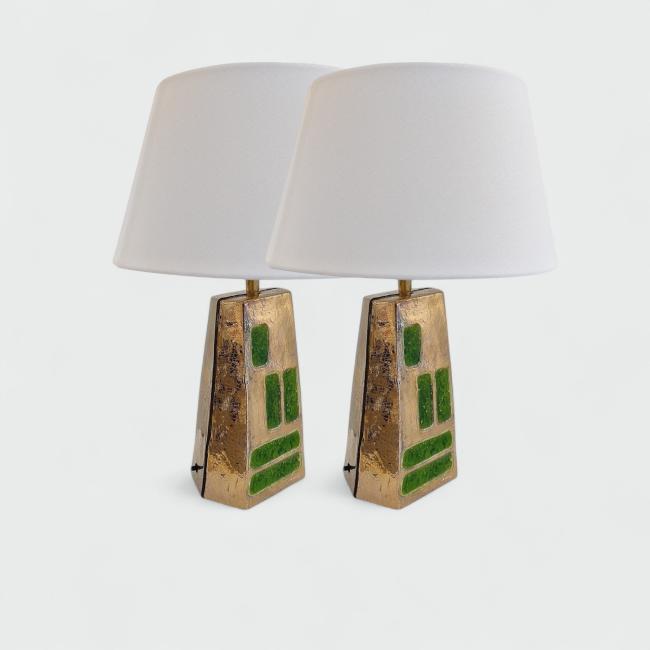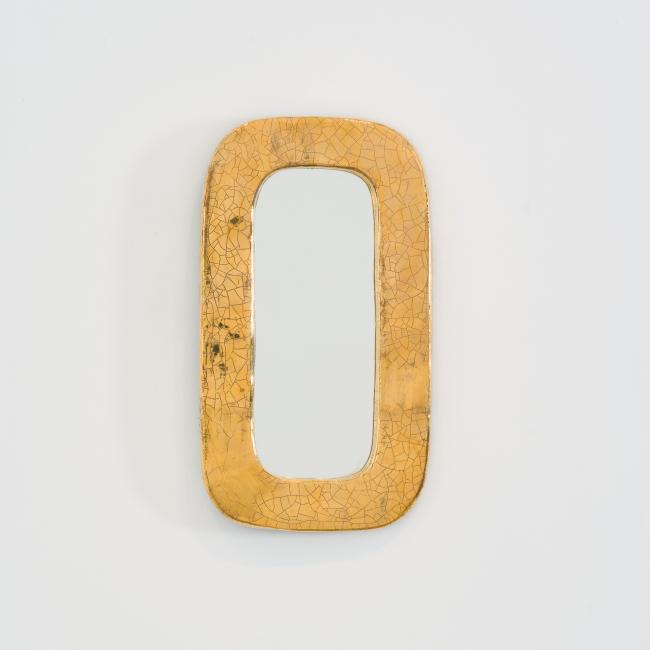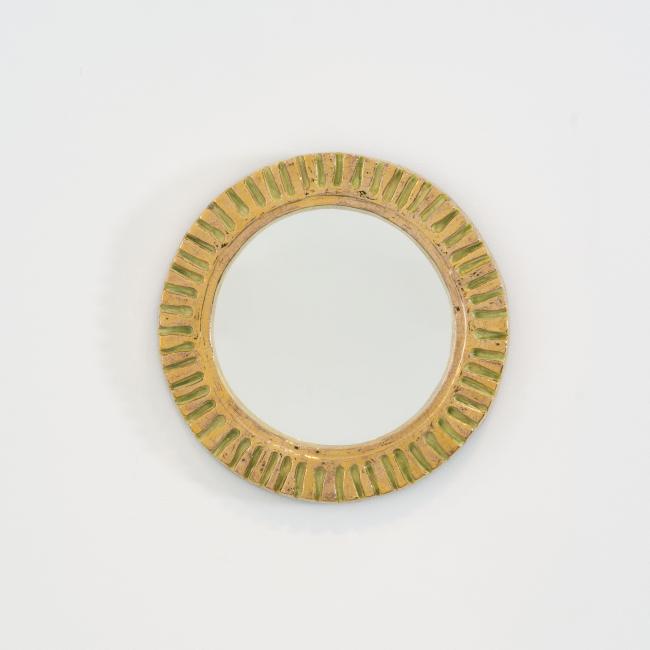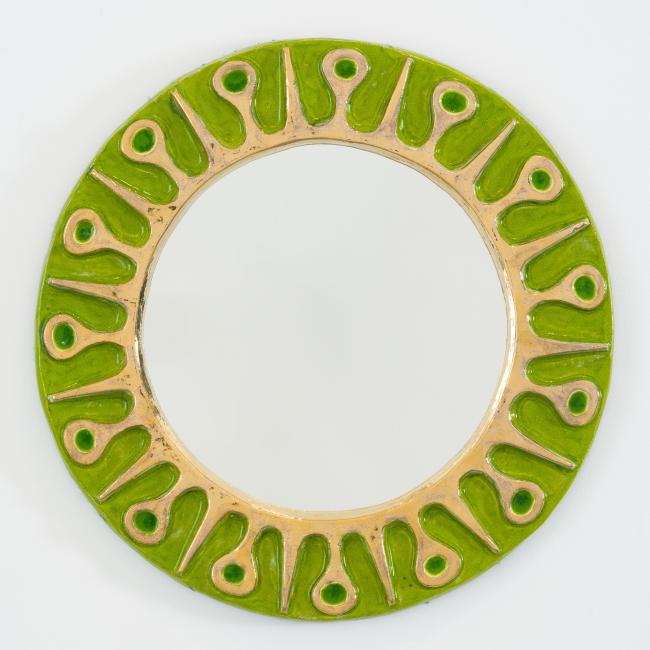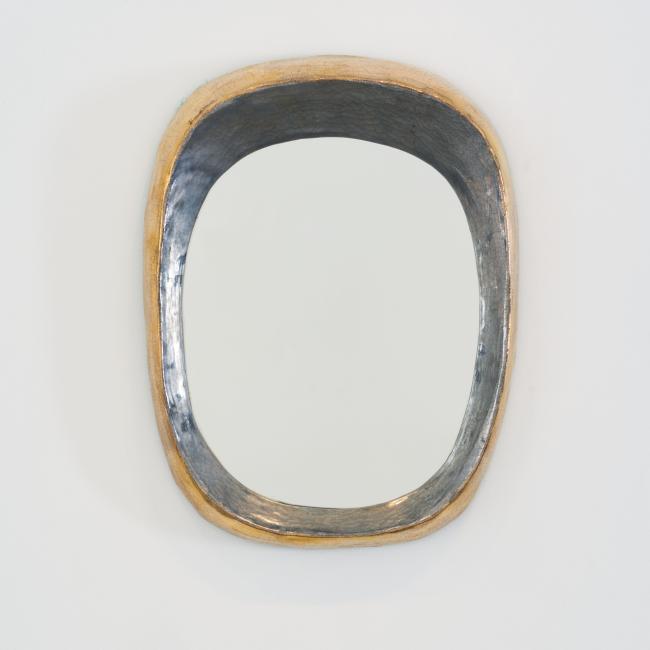Mithé Espelt
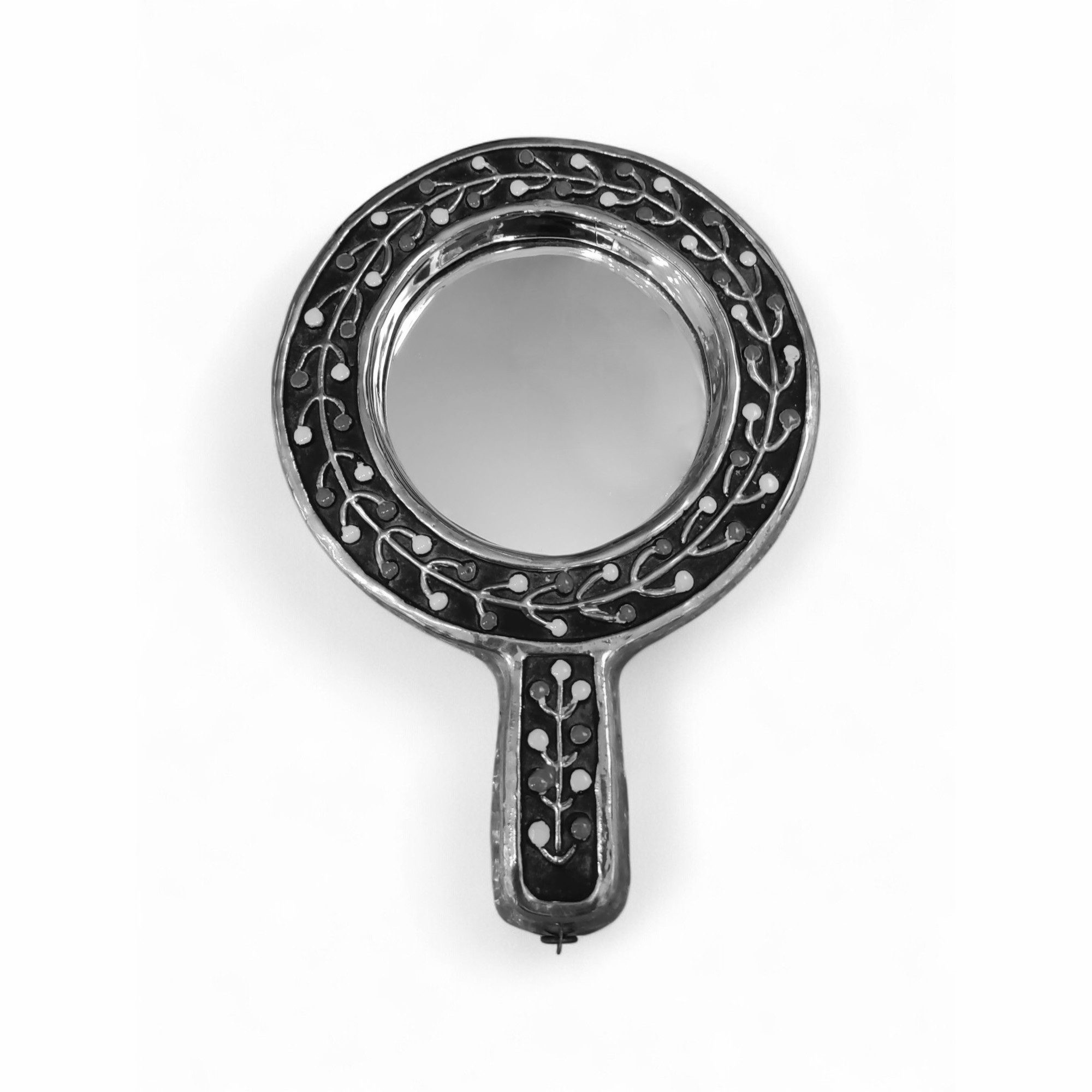
Galerie Omagh has the privilege to present a rare and exclusive selection of mirrors by Mithé Espelt, emblematic figures of her body of work. Each of these pieces, chosen for its quality, rarity, and integrity, bears witness to the artisanal excellence and poetic refinement of this discreet yet major figure in 20th-century decorative arts.
Mithé Espelt, born Marie-Thérèse Espelt in 1923 in Lunel, Camargue, was a French ceramicist whose work, long overlooked, is now being rediscovered and celebrated for its formal singularity and understated elegance.
Coming from a family of winemakers, she grew up in a creatively receptive environment thanks to her grandfather Edmond Baissat, an artist and friend of Frédéric Mistral, Jean Hugo, and the literary circles of southern France. She began her training at the age of 16 at the École des Beaux-Arts in Montpellier, continued at the École de Fontcarrade, where she specialized in ceramics under Émilie Decanis, and later completed her studies in Paris.
In the immediate postwar years, she briefly joined the workshop of Nathalie Pol in Saint-Germain-des-Prés, where she was in charge of producing Line Vautrin’s ceramic buttons for haute couture houses. But it was in Lunel, starting in 1946, that she founded her own studio and developed a unique visual language, somewhere between enameled goldsmithing, wall jewelry, and interior objects. Her creations: mirrors, boxes, jewelry, were first distributed in Sète, Montpellier, and Paris, then in Biarritz and Saint-Tropez, before reaching as far as Martinique and the United States. She maintained trusted relationships with a few select distributors but consistently refused promotional, institutional, or theoretical approaches.
Espelt made the radical choice not to sign her works, convinced that their formal coherence would speak for itself, and seeking to preserve a kind of serene anonymity. She voluntarily withdrew from the art scene, preferring the calm of her studio to public recognition.
It was only in the early 2010s that her work began to be rediscovered, notably thanks to the efforts of collector Antoine Candau. He played a major role in establishing, documenting, and promoting a body of work remarkable for its independence, technical finesse, and symbolic resonance. Today, her ornate mirrors, decorative boxes, and enameled and gilded ceramic jewelry are featured in specialized galleries and sought after by collectors in France and abroad.
The posthumous recognition of Mithé Espelt reveals the quiet strength of a body of work rooted in intimacy, sensitivity, and permanence, and reaffirms the place of the decorative arts as a language in their own right in the 20th century.

